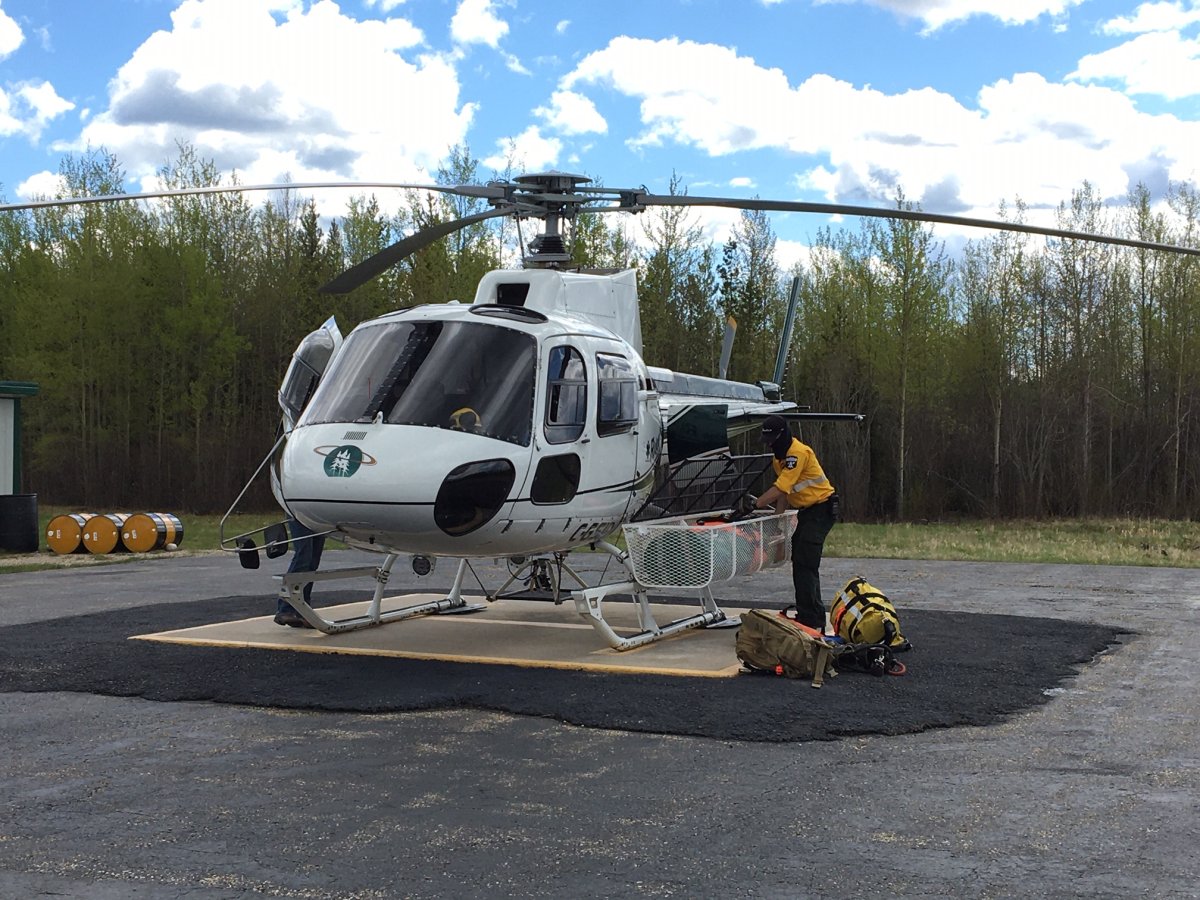Fire bases in the province look a bit different this year because of COVID-19.

All aspects of Alberta Wildfire bases, from how firefighters train to how camps are managed, have been affected by the virus and precautions to prevent its spread, according to Alberta Wildfire OHS Advisor Mike Fedun.
Global News was recently taken on a tour of the Swan Hills Fire Base, approximately two-and-a-half hours northwest of Edmonton.
Fedun said firefighters are screened and assessed before they enter a camp, and once inside, there is a set of precautions to follow, ranging from physical distancing to increased cleaning and disinfecting of facilities.
He said that there have been no positive cases of COVID-19 among wildland firefighters in the entire province.
Previously, large groups of between 30 and 40 firefighters would receive instructional training in a room. Fedun said that groups have been shrunk to between eight and 10 firefighters, each of whom are physically distanced, and at tables with hand sanitizer.
READ MORE: What is physical distancing and how can you do it?
“We’re taking advantage of technology. We’re doing Skype training. For example, today in the building behind me, there’s training going on…and the person that’s delivering the training is Skyping in from Whitecourt,” he said.
Food service at the fire base is also dramatically different. There are more plexiglass barriers between the serving staff and firefighters, each of whom must remain two metres apart while waiting in line, all meals are prepackaged and firefighters eat physically distanced in tents or in their rooms.
Large group exercises are also a thing of the past.
“When it comes to training for tools like chainsaws, it’ll be done in smaller groups and more smaller groups as opposed to one larger group,” Fedun said.
“We’ve been really forced to look at how we can spread out that training…and still provide the same level of training we provided in the past.”
The province is preparing to enter Phase 2 of relaunch, but Fedun said vigilance will be maintained at all fire bases.
“Work camps have proven, and industrial work sites have proven, to be a higher-risk situation.
READ MORE: Three workers in Alberta oilsands camp test positive for COVID-19: Hinshaw
“As we go through the summer, if the number of cases in Alberta do not increase, and if we find the risk is significantly lowered, we are open to revising our plan as necessary. But for the foreseeable future, our precautions are going to remain in place,” he said.
Calgarian Helena Struthers said the pandemic has changed almost all aspects of her day-to-day routine as a wildland firefighter.
“Everything just takes a little longer but we’re still able to get the job done because we do understand meeting our dispatch time and stuff like that is important,” she said.
Struthers is part of the heliteck crew, meaning she is transported to fires via helicopter, said she’s had to make some adjustments.
“Sanitizing the helicopter every time we get out, making sure we keep our individual headsets, just more things to consider,” she said.

Camp Supervisor Thorsten Madauss said the changes have been challenging.
“We have lots of returning members here who have been used to previous years of having a certain routine. That changed by 180 degrees.
“It’s a huge change compared to previous years,” he said.
Madauss, who is in his seventh year as camp supervisor, said each firefighter wears face buffs when they must come within two metres of another person.
Madauss said he does not have concerns as the province moves deeper into wildfire season, saying the new procedures are effective.
“We are actually a great family here,” he said. “We try to take care of each other.”

















Comments